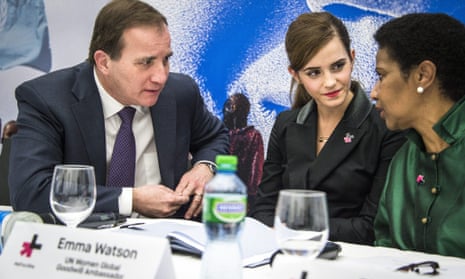Social inclusion is at the top of the agenda in Davos, Switzerland, this week, where the question of the role equality plays in driving growth is being asked at every given opportunity. However, of those asking that question, an important voice is missing: women’s.
The portion of female participants at the World Economic Forum meeting is at the stunningly low level of 17% . Davos is both a victim and an indicator of its surrounding reality.
To find truly sustainable solutions for our global issues, we need to embrace more diversity in the process of developing those solutions. Only then can we expect to spearhead a new development or economic paradigm, or apply a new principle of social inclusion.
This idea is backed by a growing body of research, which has yielded a profound change in our understanding of the role of equality as a growth stimulator.
For instance, research reveals that diversity in the boardroom enhances corporate performance (pdf). Companies with female representation in the boardroom clearly outperform those with no women on various dimensions including share price performance, return on equity or operating results.
Despite that, there is still a considerable gender gap in corporate boardrooms around the globe. Research by Catalyst shows that in 2013, women held not even 17% of corporate board seats. Just 14.6% of executive officers were women, and 4% of these were CEOs.
A similar gap can be seen in comparable public positions. Failing to include more women affects business results, employee engagement and innovation.
In other words: the gender gap hurts whole economies.
At the heart of the matter lies the principle of equality. Proof that equality is difficult to attain can probably be seen best when looking at the pay gap of some 15.5% between men and women in full-time work.
Economic research points to the huge implications for the global economy, should the disparity between male and female employment prevail. A report released this week found that economic inequality for women costs the global economy $9tn. And Goldman Sachs research in 2007 found that closing the gender gap in unemployment rates (pdf) would boost gross domestic product by as much as 9% in the US, 13% in Europe and 16% in Japan.
The gender gap in the boardroom is a long-standing and vexing inequality. The business world is only slowly coming to understand that leadership, in essence, is about walking the talk.
A governing body, such as a corporate board, has an opportunity to signal its authenticity and maturity by diversifying its own composition to reflect the desired state of equality.
There are other compelling reasons too. To name just one: companies that improve their representation of women on the board can also better attract a wider spectrum of talent.
The pool of potential hires is larger, resulting in more balanced hiring of female and male candidates in the future. This, in turn, increases the chances of influencing corporate culture, as well as career advancement and promotion processes, towards gender equality.
A recent study in Science concludes that seeing female leaders – top decision-makers such as board executives and others – increases career aspirations and educational attainment for young women. It inspires young women to want to advance their careers. Moreover, a gender diverse board sets an example for the rest of the leadership and workforce within the company. It would likely initiate change by itself being the change.
In the case of a meeting like Davos, diversity is a precondition to seriously addressing the pressing global challenges of inequality and social justice it aims to tackle. To ensure a sustainable impact, Davos needs to live up to the new paradigm it is trying to create.
Full gender equality is a prerequisite to societal progress and well-being. It rests on a central pivot – the fundamental principle of unity – that humanity is, in essence, a family, with each of us – whether male or female – as equal members. As such, lasting change will only occur if an unshakeable consciousness grows, resulting in the fundamental transformation in all our attitudes and values, including our governing and consultative institutions.
The denial of equality to one half of the world’s populations is an insult to human dignity. And organizations that overlook this fact send the message that they don’t care about half of the world’s talent.
This year’s Davos coverage is funded by The B Team. All content is editorially independent except for pieces labelled “brought to you by”. Find out more here.
